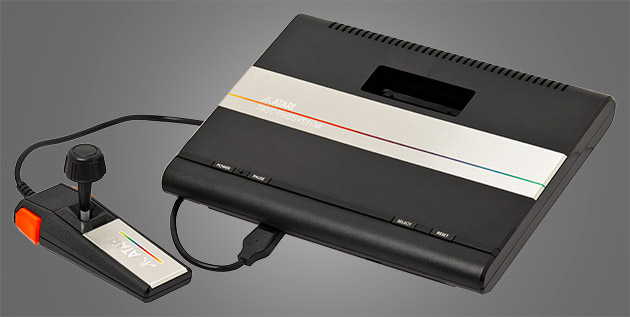
In the early '80s, Atari was reigning supreme in the console market, with their 2600 reaching its twilight years but boasting a vast library of games. Even with the founding of Activision and the startup of competitors like Mattel's Intellivision, it seemed that the only way for Atari was up, and that between the release of a new console and the sale of some huge system selling games, the crown was going to stay on Atari's head.
However, they managed an impressive chain of missteps in a very short space of time. The planned successor the the 2600, the 5200, was a flop with its ungainly controller and inability to play 2600 games without a peripheral (weirdly, its main competitor, the Colecovision, had the exact same thing. As the Nerd once put so eloquently, that's like Sony announcing a disk drive that can play Xbox games for the Playstation). There was an utter lack of quality control on its games, and no game review establishment to separate the wheat from the chaff. And the final nails in the coffin where a few rushed, high-profile games that failed to deliver on Atari's own hype, like the port of Pac-Man and E.T. the Extra-Terrestrial. By 1983, consumers in America simply no longer trusted the home console market, and they certainly didn't trust Atari. Atari, partnering up with General Computers, tried to fix this, with the announcement of the Atari 7800 in 1984, to be released that year.
One rather significant thing blocked them from making that deadline. Warner, the company that owned Atari, sold it to Jack Tramiel, the guy who founded Commodore. The bought out portions of Atari was to undergo an 'evaluation process', during which progress on all projects was to be halted. The 7800 was eventually released, in 1986, but by then the home console market had a new king, one that almost nobody back in 1984 could have predicted would conquer every home in America, Nintendo. The 7800 was left in the Nintendo Entertainment System's, and even the Sega Master System's dust, and one more console would be made in Atari's name, the Jaguar, before Atari went full third party.
Let's say Atari managed to at least get a few things right. Say they hit a home run with Pac-Man for the 2600, they win Christmas 1982 with an E.T. given a little more time to be developed, they set up some kind of quality control, just enough to convince Warner that holding on to Atari would be a good idea. The 7800 hits selves in 1984, a full year before Nintendo's Famicom crosses the Pacific. On one hand, the 7800 hundred was a solid system for 1984, and if nothing else had complete backwards compatibility with 2600 controllers and cartridges. On the other, home consoles were still toxic to customers and even retailers, and Sega's Dreamcast proves that even a good system can be spoiled if its parent company ruins its own reputation. How would Nintendo perform in America, if Atari still has some semblance of standing? Would one quickly beat down the other, or would the dynamic evolve into something similar between Nintendo and Sega, or Sony and Microsoft, an ongoing multigenerational 'console war'?